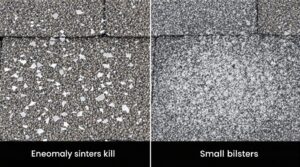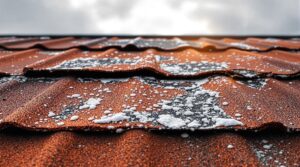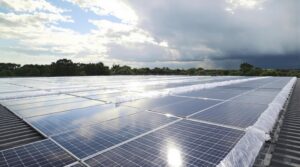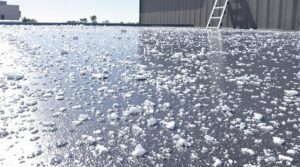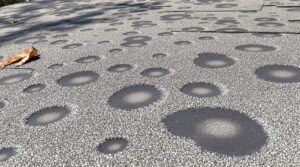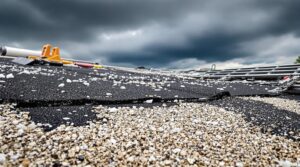Has hail turned your vinyl siding into a golf ball's worst nightmare? Let's tackle those telltale signs and solutions head-on!
Your home's vinyl armor can take quite a beating from hailstorms, showing battle scars like dimples, splits, and wonky panel spacing – usually most visible where the storm had a clear shot above waist height. Think of it as Mother Nature's unfortunate game of paintball, leaving lasting impressions on your house's exterior.
Want to fix those pesky damages? You're looking at $150-$250 per 10'x10' section if you bring in the pros, while DIY warriors can start patching things up for around $50. But before you grab your tools or phone a contractor, let's talk insurance.
Filing a claim? You'll need to become a modern-day detective – snap photos, shoot videos, and gather multiple contractor quotes like you're collecting evidence for a home improvement court case. Pro tip: teaming up with a public adjuster is like having a seasoned negotiator in your corner, helping you navigate the claims maze and potentially secure a better settlement.
Keep in mind that your siding's age (just like us, it gets more sensitive with time), quality (not all vinyl is created equal), and weather patterns play crucial roles in how well it stands up to nature's curveballs. After all, even Superman had his kryptonite, and your siding has its weak spots too!
Key Takeaways
Is Your Vinyl Siding Telling Tales of a Hailstorm?
Think of your home's vinyl siding as its protective armor – when hail strikes, it leaves behind a unique story. You'll spot the telltale signs mostly above waist height: crater-like dents, spider-web cracks, and battle scars across multiple panels, like nature's morse code.
Getting your siding back in fighting shape? Professional repairs typically run $150-$250 per 10'x10' area, though DIY warriors can tackle minor fixes starting around $50. But before you break out the tool belt, consider this: proper repairs ensure your home stays weather-tight and beautiful.
Smart homeowners know the insurance claim dance. Start by playing detective – snap clear photos, shoot detailed videos, and gather estimates from at least three contractors. Your insurance policy is like a contract with fine print, so study it carefully before making your move.
Just like we're more susceptible to sunburn as we age, your siding's resistance to hail depends on its age, quality, and weather exposure history. Newer, premium-grade siding often stands up better to nature's curveballs.
Feeling overwhelmed by the claims process? That's where public adjusters come in – think of them as your personal insurance translators. They're pros at speaking the insurance language and can help you get the maximum value from your claim through detailed documentation and skilled negotiation.
Remember: what might look like minor dimples today could lead to bigger headaches tomorrow, so don't wait to address hail damage when you spot it.
Understanding Hail Damage on Vinyl Siding
Understanding hail damage on vinyl siding requires consideration of multiple interconnected factors that influence its vulnerability to impact.
Age plays an essential role in siding longevity, as older installations become more brittle and susceptible to hail impact. The condition of existing siding, particularly on south and west-facing walls, affects its resistance to damage.
Quality and thickness of vinyl material greatly influence damage susceptibility, with premium-grade options offering enhanced durability.
Wind conditions during hailstorms can amplify damage potential, as higher speeds increase impact force.
Location patterns help distinguish genuine hail damage from other forms of wear, with damage typically concentrated above waist level and showing uniform distribution across multiple panels.
Professional inspection often reveals subtle damage patterns that may not be immediately visible to untrained observers.
The highest risk of severe hail damage occurs in Hail Alley states including Texas, Oklahoma, Kansas, Nebraska, Colorado, Wyoming, and South Dakota.
Common Types of Hail Damage and Their Severity
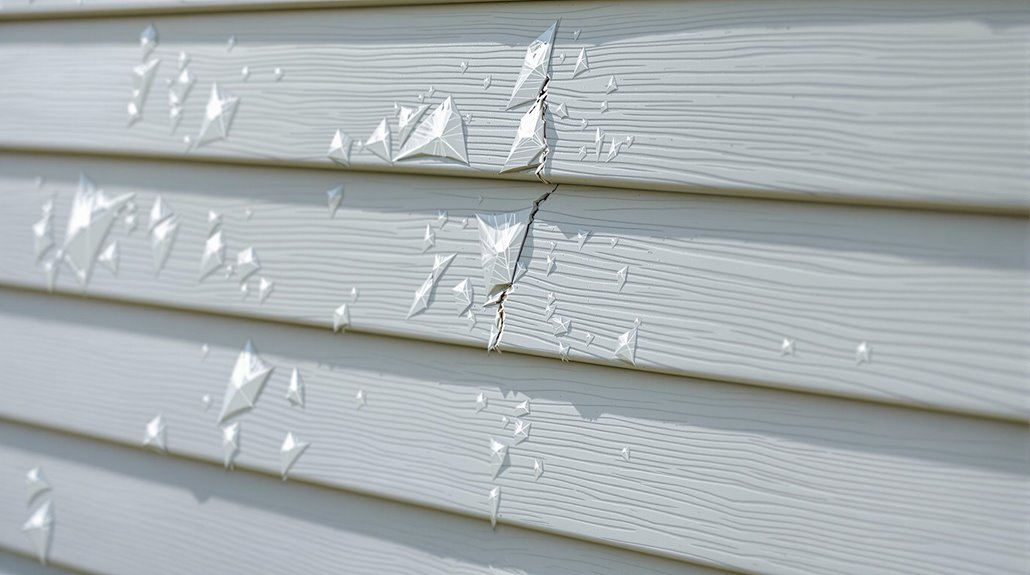
Several distinct types of hail damage can affect vinyl siding, ranging from minor cosmetic issues to severe structural problems. The most common forms include visible dents from larger hailstones, cracks and splits that compromise the siding's integrity, and gaps between panels that can lead to water intrusion.
The severity of damage varies greatly based on hail size and impact force. While small dents from pea-sized hail may only affect appearance, larger impacts can create serious structural implications.
These include compromised weatherproofing, increased vulnerability to future storms, and potential water damage to underlying materials. Understanding these types of dents and their consequences is essential for proper assessment and timely repairs, as unaddressed damage can escalate into more notable issues over time. Homeowners should document all damage with clear photographs and detailed descriptions to support successful insurance claims.
Factors That Make Vinyl Siding More Susceptible to Damage
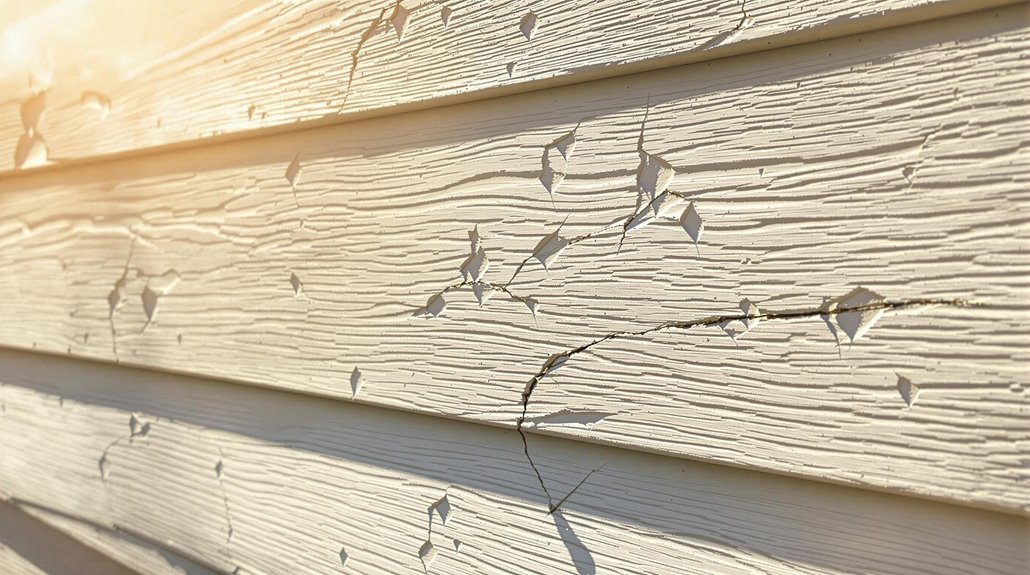
Four primary categories of factors influence vinyl siding's susceptibility to hail damage: age-related deterioration, current condition, material quality, and environmental exposure.
The vulnerability of vinyl siding increases considerably with age as the material loses flexibility and becomes brittle. Environmental factors, including UV exposure, wind patterns, and regional weather conditions, play vital roles in determining damage susceptibility.
Regular vinyl siding maintenance becomes essential to mitigate these risks.
- Material thickness and grade quality directly affect impact resistance
- South and west-facing walls experience accelerated deterioration
- Loss of plasticizer over time increases brittleness and crack potential
- Geographic location influences exposure to severe weather events
- Installation quality considerably impacts long-term durability and resistance
Working with public adjusters can help identify concealed damage patterns that might affect insurance claim settlements for vinyl siding repairs.
How to Assess and Document Hail Damage
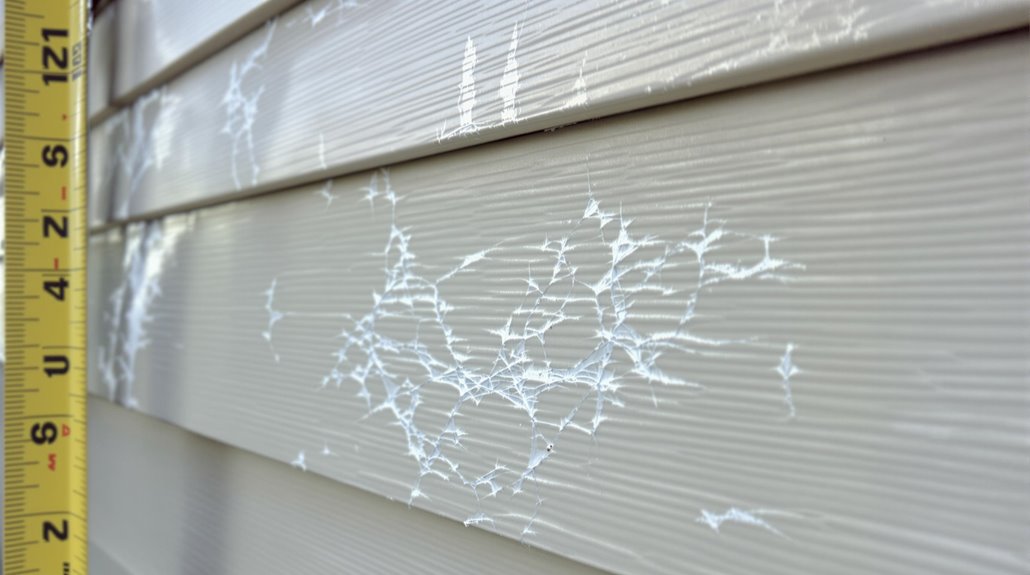
A thorough assessment of hail damage on vinyl siding requires a systematic approach combining visual inspection techniques and proper documentation methods.
When conducting hail assessment techniques, inspectors should examine surfaces during low sunlight conditions, which helps highlight dents and cracks more effectively. Using binoculars allows for safe inspection of elevated areas without ladder risks.
Documenting damage requires extensive photographic evidence from multiple angles, accompanied by detailed measurements of dents and cracks. Insurance claims benefit from video recordings that capture the full extent of the damage.
Professionals should focus on areas directly exposed to hailstorm impact while distinguishing hail-related damage from other forms of wear. For accurate assessment, comparing damaged sections with undamaged areas provides essential context, while proper safety equipment, including gloves and proper lighting, facilitates thorough inspection.
Comprehensive documentation can lead to faster claim settlements when working with public insurance adjusters who specialize in evaluating storm damage.
Professional Vs DIY Repair Options
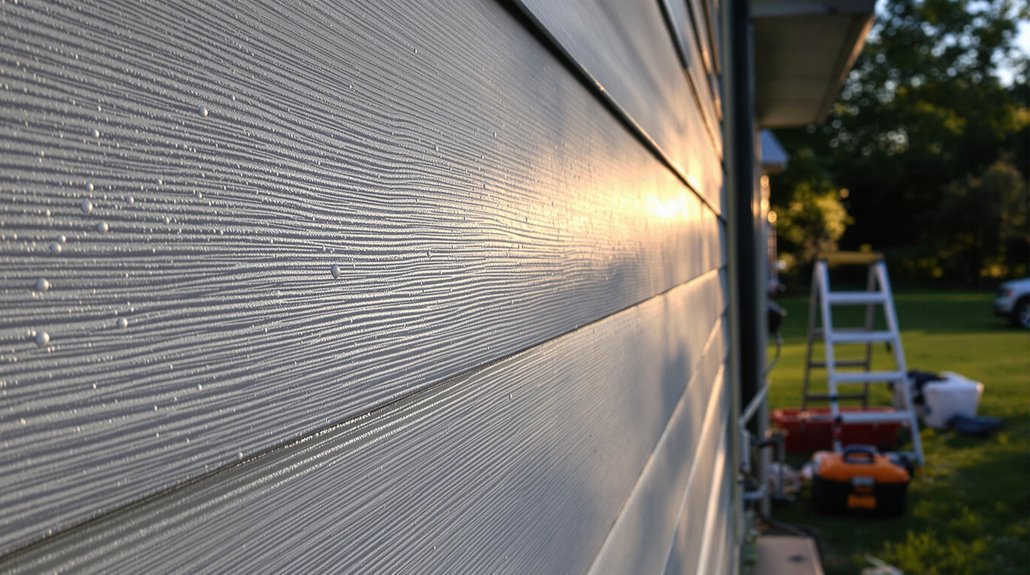
When comparing professional and DIY repair options for hail-damaged vinyl siding, homeowners must weigh the higher costs of professional services against potential long-term savings from expert workmanship.
The tools and expertise required vary greatly, with professionals utilizing specialized equipment and extensive knowledge while DIY repairs typically involve basic tools and intermediate skill levels.
Safety considerations and risk assessment strongly favor professional repairs for extensive damage, particularly in hard-to-reach areas or when structural issues may be present.
Repair Cost Comparison
Many homeowners face the crucial decision between professional and DIY repair options when addressing hail-damaged vinyl siding, with costs varying greatly between the two approaches.
A cost breakdown reveals professional repairs typically range from $150-$250 per 10'x10' section, plus materials ($200-$300), while DIY repairs can start as low as $50 for minor damage.
The repair timeline often influences the choice, as professional work guarantees faster completion but at higher costs.
Average hail damage claims reach $12,000 per incident for residential properties.
- Professional repairs average $400-$550 per section including labor and materials
- DIY repairs for minor damage can cost $50-$100 with basic tools
- Professional labor rates range from $50-$150 per hour
- Insurance coverage can greatly reduce out-of-pocket expenses
- DIY repairs can save hundreds but are limited to simple, smaller repairs
Tools and Expertise Required
Beyond cost considerations, successful vinyl siding repairs depend heavily on having the right tools and expertise at hand. Tool selection varies based on damage severity, with basic repairs requiring utility knives, pry bars, and measuring tape, while complex repairs demand specialized equipment. Expertise evaluation helps determine whether DIY or professional services are appropriate.
| Repair Type | Required Tools | Expertise Level |
|---|---|---|
| Minor Cracks | Utility Knife, Caulk | Beginner |
| Panel Replacement | Pry Bar, Hammer, Nails | Intermediate |
| Large Area Damage | Power Tools, Scaffolding | Advanced |
| Corner/Trim Work | Specialized Cutters | Professional |
| High Elevation | Safety Equipment | Professional |
Professional services become essential when repairs involve structural assessments, complex installations, or work in hard-to-reach areas. Certified contractors possess both the necessary tools and technical knowledge to guarantee lasting repairs while maintaining warranty coverage.
Safety and Risk Assessment
The decision between professional and DIY vinyl siding repairs involves essential safety considerations and risk factors that must be carefully evaluated.
Professional contractors implement established safety protocols and possess extensive experience in risk management, ensuring thorough damage assessment and proper repair techniques.
DIY attempts, while potentially cost-saving initially, can expose homeowners to significant risks including improper repairs, safety hazards, and potential insurance claim complications.
- Professional assessments identify hidden damage that may compromise structural integrity
- Proper safety equipment and protocols minimize accident risks during repairs
- Expert repairs maintain warranty compliance and insurance claim validity
- DIY repairs may overlook critical damage leading to long-term complications
- Professional risk management strategies include thorough documentation and quality materials
Studies show that homeowners who work with public insurance adjusters receive settlements up to 800% higher than those filing claims independently.
Estimating Repair and Replacement Costs
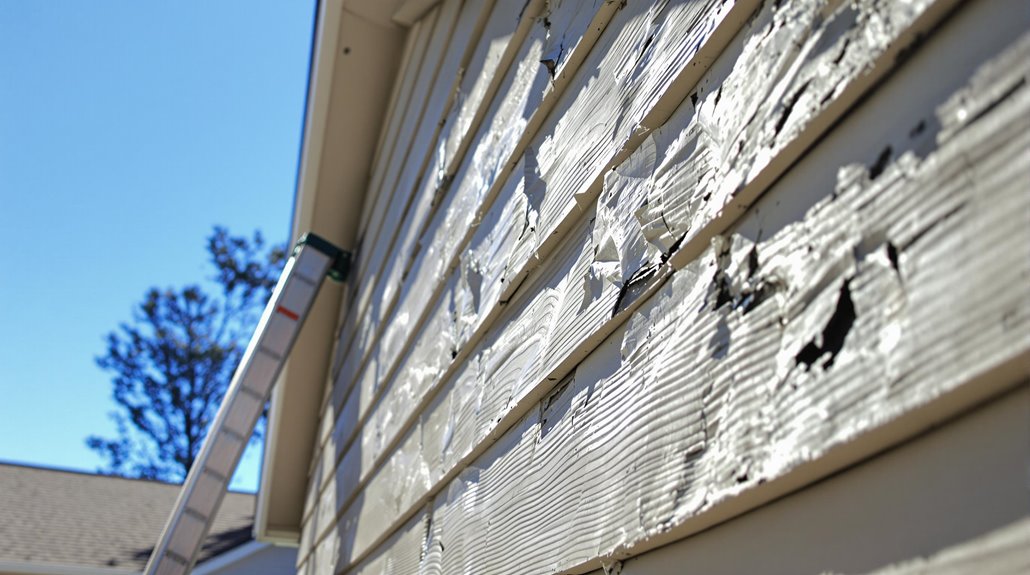
Understanding repair and replacement costs for hail-damaged vinyl siding requires consideration of multiple variables that influence pricing. Accurate repair budgeting depends on factors including material costs, damage extent, geographic location, and accessibility. Cost estimation varies greatly based on the scope of repairs needed.
| Repair Type | Cost Range |
|---|---|
| Minor Repairs | $50-$200 |
| Moderate Repairs | $200-$600 |
| Extensive Repairs | $600-$1,500 |
| Single Panel | $8-$60 |
| Full Wall | $6,000-$15,000 |
While vinyl siding remains one of the more affordable materials, ranging from $2 to $10 per square foot, labor costs can increase greatly in urban areas or for hard-to-reach locations. Professional consultation becomes essential for extensive damage assessment and accurate cost projections. Similar to solar panel claims, public adjusters can help streamline the insurance claims process and often secure higher settlements for vinyl siding damage.
Filing an Insurance Claim for Hail Damage
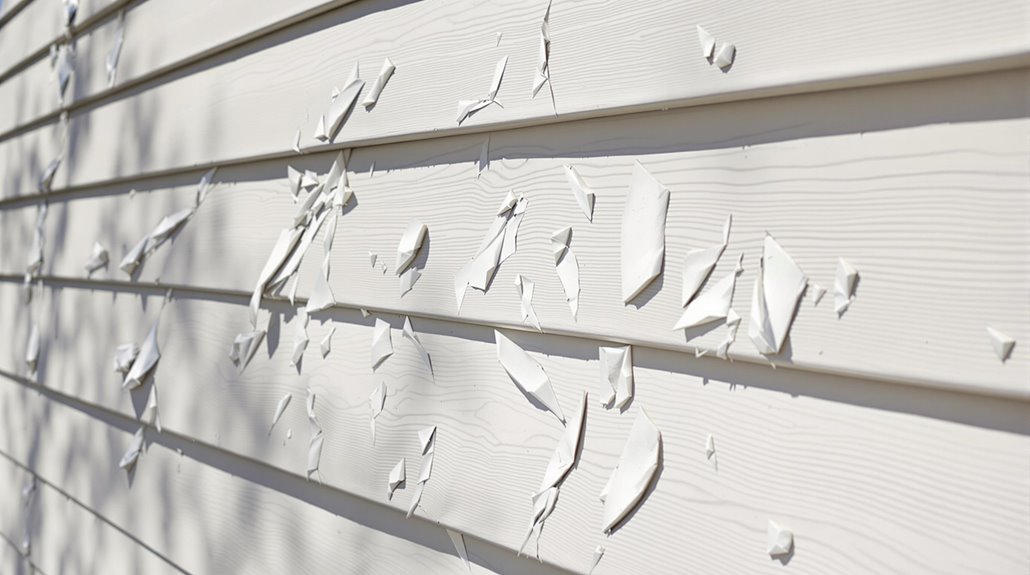
Filing an insurance claim for hail-damaged vinyl siding involves a systematic process of documentation, assessment, and communication with insurance providers.
The process begins with thorough claim documentation, including photographs and videos of the damage, followed by a review of the insurance policy terms and coverage.
After filing through the insurer's preferred method, an adjuster communication process begins, leading to a professional assessment of the damage and estimated repair costs.
- Review policy coverage and deductibles before initiating the claim
- Gather extensive photo and video evidence of all damage
- File claim through insurer's website, mobile app, or phone
- Maintain clear communication with the assigned insurance adjuster
- Consider multiple contractor estimates to support claim value
Engaging a public adjuster can significantly improve your chances of receiving a higher settlement amount compared to handling the claim independently.
Preventive Measures and Long-Term Solutions
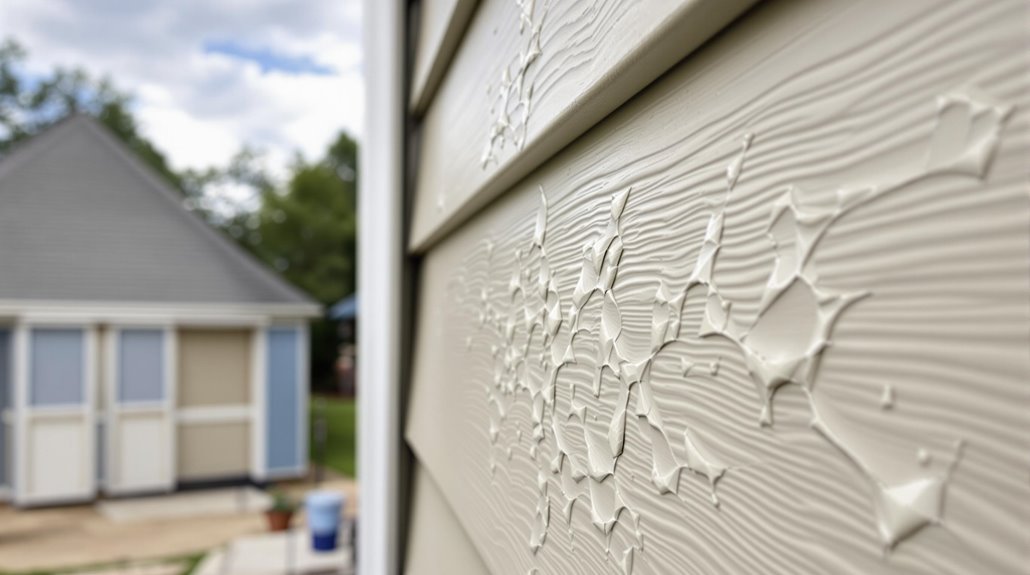
Protecting vinyl siding from hail damage requires an extensive approach that combines strategic material selection, temporary protective measures, and proactive maintenance practices.
Key preventive strategies include upgrading to more resilient materials like fiber cement or engineered wood siding, installing protective elements such as hail guards and storm shutters, and maintaining regular inspection schedules.
Long-term planning involves considering architectural solutions like steep-sloped roofs that naturally deflect hailstones, investing in impact-resistant siding materials, and ensuring thorough insurance coverage.
Temporary protection can be achieved through the use of protective blankets and hail panels during severe weather events.
Regular maintenance, including prompt repairs of minor damage and thorough cleaning, helps preserve the siding's integrity and prevents the escalation of existing damage.
Monthly inspections can reveal delayed damage indicators that may not be immediately apparent after a hailstorm, as deterioration can develop over 3-12 months.
The Benefits Of Consulting A Public Adjuster
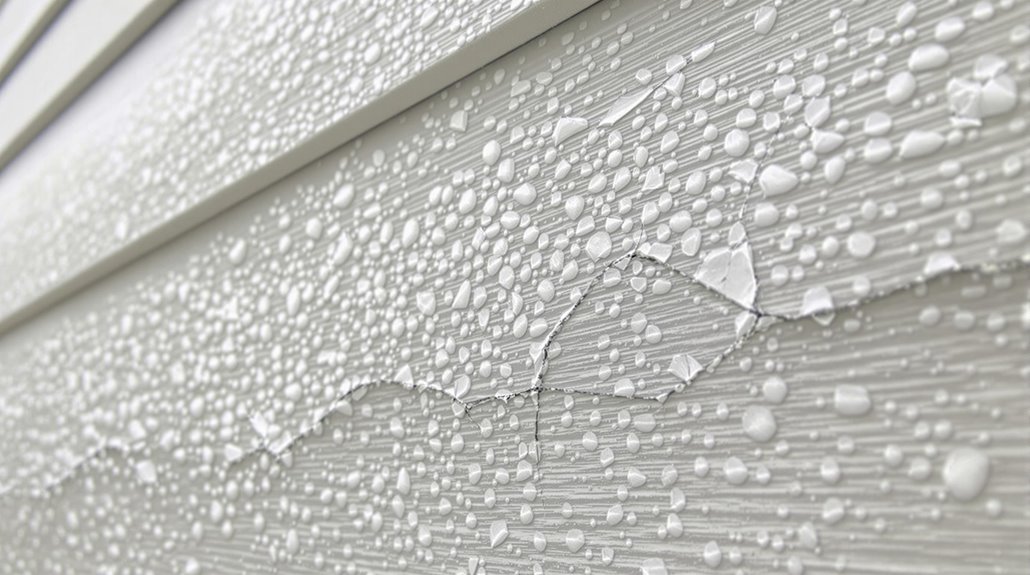
A public adjuster offers critical expertise in managing insurance claims for vinyl siding hail damage, ensuring objective assessment and accurate documentation of all impacted areas.
Their professional experience enables a streamlined claims process, eliminating common obstacles and reducing processing time for homeowners.
Public adjusters typically secure higher claim settlements through their detailed understanding of insurance policies and skilled negotiation tactics with insurance companies.
Working with a public adjuster can result in 8x higher settlements compared to self-filed insurance claims.
Expertise In Insurance Claims
When dealing with vinyl siding hail damage, consulting a public adjuster offers significant advantages for homeowners managing insurance claims.
These professionals possess specialized knowledge in insurance policy interpretation and claims process navigation, ensuring complete coverage for hail-damaged siding. Public adjusters work exclusively for policyholders, leveraging their expertise to secure fair settlements while managing all aspects of the claims process.
- In-depth understanding of insurance policies and coverage limitations
- Professional evaluation and documentation of hail damage extent
- Expert negotiation skills with insurance companies
- Thorough knowledge of current repair costs and industry standards
- Strategic approach to maximizing claim settlements within policy terms
Their expertise helps homeowners avoid common pitfalls while ensuring accurate damage assessment and appropriate compensation for vinyl siding repairs.
Objective Damage Assessment
Objective damage assessment through a public adjuster provides homeowners with a detailed evaluation of vinyl siding hail damage. During the damage evaluation process, adjusters conduct extensive inspections, document findings, and develop claim strategies to guarantee fair compensation.
| Assessment Component | Key Actions | Benefits |
|---|---|---|
| Professional Inspection | Thorough site evaluation | Identifies all damage points |
| Documentation Methods | Photos, videos, notes | Creates evidence portfolio |
| Cost Analysis | Detailed estimates | Guarantees accurate compensation |
| Claim Strategy | Policy review, negotiations | Maximizes settlement value |
Public adjusters leverage their expertise to counter insurance company tactics while maintaining transparent communication throughout the process. Their unbiased representation helps homeowners navigate complex claims, resolve disputes, and secure appropriate compensation for vinyl siding repairs.
Streamlined Claim Process
Consulting a public adjuster streamlines the insurance claim process for vinyl siding hail damage through efficient documentation, expedited resolution, and expert negotiation strategies.
Professional adjusters enhance claim efficiency by managing communications with insurance companies, filing extensive claims, and guaranteeing compliance with legal requirements. Their negotiation tactics, combined with in-depth knowledge of insurance policies, help maximize settlement outcomes while minimizing potential disputes.
- Manages all insurance company communications and paperwork
- Provides detailed documentation of hail damage evidence
- Applies industry expertise to expedite claim processing
- Interprets complex policy terms and coverage details
- Implements effective negotiation strategies for best settlements
These professionals save property owners time and reduce stress by handling administrative tasks while providing expert representation throughout the claims process.
Their specialized knowledge of hail damage assessment and insurance industry standards guarantees proper claim management from start to finish.
Higher Claim Payouts & Settlements
Professional public adjusters consistently secure higher claim payouts for vinyl siding hail damage through their thorough understanding of insurance policies and expert negotiation skills. Their claim strategies include detailed documentation of both visible and concealed damage, while settlement tactics focus on fair depreciation calculations and replacement cost determinations.
| Adjuster Advantage | Policyholder Benefit |
|---|---|
| Damage Expertise | Maximum Damage Detection |
| Policy Knowledge | Full Coverage Utilization |
| Negotiation Skills | Higher Settlement Values |
| Documentation Methods | Complete Damage Records |
| Appeals Experience | Successful Dispute Resolution |
Public adjusters work on commission, guaranteeing their dedication to maximizing settlements. Their expertise in distinguishing hail damage from normal wear helps prevent claim undervaluation, while their understanding of policy language guarantees all available benefits are secured during the settlement process.
About The Public Claims Adjusters Network (PCAN)
Since specific information about the Public Claims Adjusters Network (PCAN) is not available in the provided facts, this section requires a disclaimer.
However, based on general industry knowledge, professional networks of public adjusters typically facilitate collaboration and knowledge sharing among licensed practitioners.
These networks often operate to maintain high service standards and promote best practices in claims adjustment.
- Networks enable public adjusters to share expertise across different regions and specialties
- Members can collaborate on complex cases requiring diverse experience
- Professional networks often provide ongoing education and training opportunities
- Organized networks help maintain industry standards and ethical practices
- Membership in professional networks can enhance credibility with insurance companies and clients
Through network collaboration, public adjusters can better serve their clients while staying current with industry developments and regulatory requirements.
References
- https://www.trinityexteriorsinc.com/about-us/blog/artmid/1072/articleid/163/how-to-identify-vinyl-siding-hail-damage
- https://dawnweathersbeeclass.weebly.com/uploads/2/1/7/4/21744784/thank-you-for-arguing.pdf
- https://windowworldjoliet.com/blog/how-to-spot-hailstorm-damage/
- https://www.jcs.mil/Portals/36/28270_MayaguezCrisis_web updated.pdf
- https://africkerroofing.com/blogs/hail-damage-on-vinyl-siding/
- http://www.weathersealhomeservices.com/how-to-identify-and-address-hail-damage-on-vinyl-siding/
- https://www.trinityexteriorsinc.com/about-us/blog/artmid/1072/articleid/17/how-to-identify-vinyl-siding-hail-damage
- https://www.paramountext.com/how-to-spot-vinyl-siding-hail-damage/
- https://www.insuranceclaimrecoverysupport.com/hail-damage-roof/
- https://lakesidecollision2.com/common-types-of-hail-damage/

